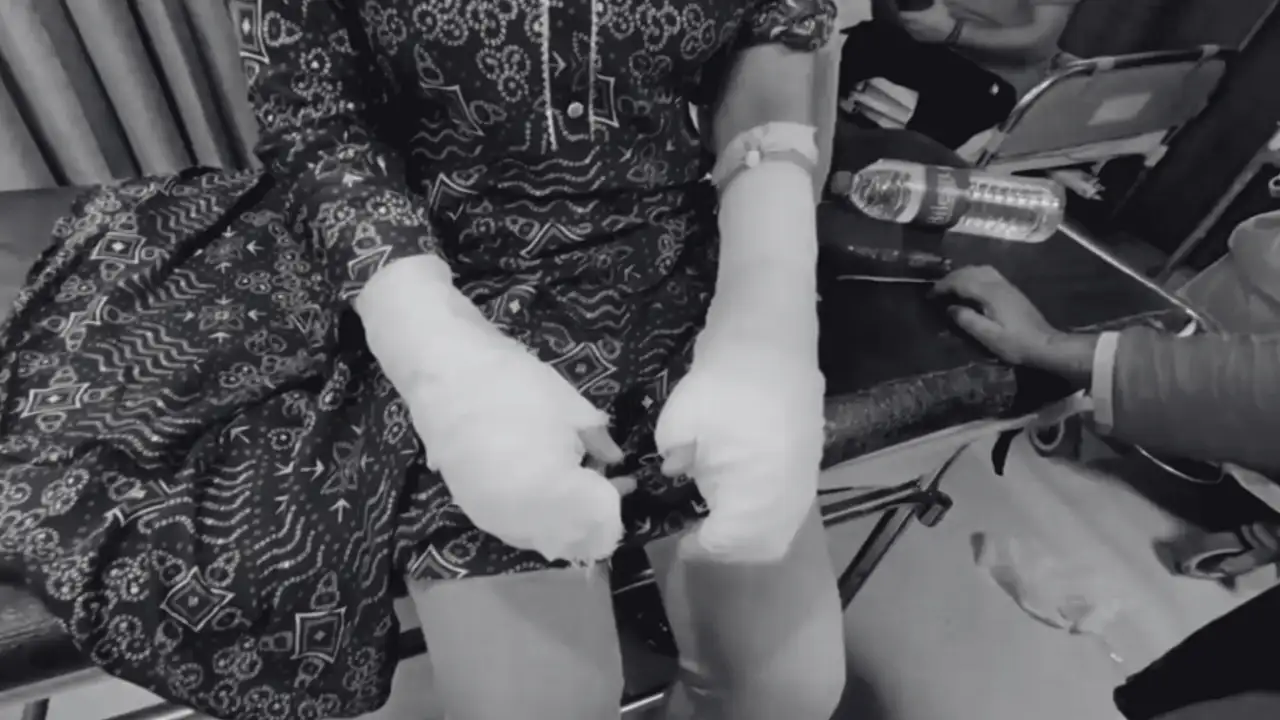Copyright forbes

An aerial of Rodeo Dunes, the new destination golf course in Roggen, Colorado, less than an hour outside of Denver. Jeff Marsh | Rodeo Dunes Created by the same family that gave golfers pilgrimage properties like Bandon Dunes and Sand Valley, golf’s newest must-see destination – Rodeo Dunes – is located just 50 miles from Denver yet feels 50 years removed. The first of six planned courses at Rodeo Dunes recently opened for preview play, a magnificent inland links layout designed by Bill Coore and Ben Crenshaw that is somewhat reminiscent of their original minimalist masterpiece – Sand Hills in Nebraska – but at the same time feels like an adventurous departure from many of their other acclaimed creations. Rodeo Dunes is being developed by Michael Keiser, one of the sons of Bandon Dunes founder Mike Keiser, and is sited on rugged sand hills (nearly 4,000 acres in total) owned by the family that runs the biggest rodeo production company in the U.S. During the first official event at Rodeo Dunes, the Cervi family held a sanctioned (and televised) professional rodeo event on property, with the first tee and 18th hole in the background. Erik Matuszewski Bandon Dunes ushered in the era of remote public golf destination experiences in the U.S, set on the Oregon coast more than four hours from Portland and about 2 ½ hours from Eugene. Sand Valley in Central Wisconsin followed, a rapidly expanding multi-course property just under three hours from Milwaukee. While both have emerged as popular golf getaways on a national level – with trip-planning that often needs to start years in advance – 85% of guests at Bandon Dunes hail from the West Coast and 85% of Sand Valley visitors are from the Midwest. Rodeo Dunes may feel removed in the tiny town of Roggen, Colorado, which has just a single gas station, but its proximity to Denver and, most importantly, one of the busiest airports in the country, could really shake things up from coast-to-coast in the world of golf travel. MORE FOR YOU “Because it's so easy to get to from all corners of the country, it really could be a place where people meet up,” Michael Keiser said after a recent introductory event at Rodeo Dunes dubbed ‘The First Ride.’ “When we do become that destination, maybe it's 85% or more from outside of Colorado. I wouldn't be surprised, just because it's 50 minutes from downtown, but it's 25 minutes from the airport. So, day of arrival, day of departure, you could play 36 holes.” Escapes and Experiences Rodeo Dunes is being created by the same family behind popular destination golf resorts Bandon Dunes (Oregon) and Sand Valley (Wisconsin). Jeff Marsh | Rodeo Dunes Golf travel has climbed to record levels in recent years, with escapism and experiential pursuits increasingly popular in the post-Covid era. Couple that demand with the way many have embraced the open range promise of adventure in the American West (the popularity of the TV show Yellowstone certainly didn’t hurt), and Rodeo Dunes has the potential for enormous appeal. “At the end of the day, I think a lot of modern life maybe seems contrived, and we seek out authentic experiences,” Keiser added. “So, when we create destinations, we always just try to lean into what's local.” In Roggen, Colorado, that first and foremost means being stewards of the ranchland and region the Cervi family has worked on, and in, for generations. While it didn’t take much to convince Coore and Crenshaw about the possibilities amid sand dunes that look like they’re from Ireland, it took years to earn the trust of Mike Cervi, the late family patriarch. The Cervis weren’t golfers, and it took years to finalize a partnership that carved out a small piece of their bigger property for a destination golf property that benefits the local community and preserves the land. “With the legacy of this land, we hope that golf in its own way becomes a complement to what (the Cervi family) has done for generations here,” Coore said. The cattle brand that the Cervi family has used for generations serves as the tee markers for the first course at Rodeo Dunes. Erik Matuszewski The Cervi family first homesteaded on the land in 1883, seven years after Colorado became a state, and the Cervi ranch brand is the second oldest in Colorado. That cattle brand is used for the tee markers on the first course at Rodeo Dunes, a layout that is simply called Rodeo Dunes – not unlike the original courses at Bandon Dunes and Sand Valley. Inland Links There are sand dunes that soar up to 90 feet high at Rodeo Dunes. Jeff Marsh | Rodeo Dunes There is very much an inland links inspiration – think Ireland meets the American West – on a course that plays around, through and alongside dunes as big as 90 feet high. There are incredible natural contours and sweeping views of the wide-open surrounds and Colorado’s distant Front Range mountains. There’s a rugged, natural feel to the landscape, which given its proximity, is somewhat reminiscent of the Sandhills of Western Nebraska. There are split fairways, blind or partially blind shots, and approach shots that play upwards to greens benched into sand dunes that have drawn comparisons to green complexes at Cypress Point and Monterey Peninsula Country Club on the California coast. While the Coore-Crenshaw approach has always been a minimalist touch and letting the land determine the lie of golf holes, Keiser said he encouraged the duo to leave some of the wildest features at Rodeo Dunes alone. Aerial image of the fourth hole at Rodeo Dunes, which is bound to be one of the most memorable holes on the course. Erik Matuszewski “I love the charm of these courses that were built in Ireland and Scotland before heavy machinery,” Keiser said. “The default was, if you have to move it, you just leave it. So, on the first hole, for example, there’s a knob that blocks the view of the green from the entire right side. Instead of melting that down to frame a gorgeous approach, we just said, ‘What if we just leave it as is? It was encouraging them just to really just leave things alone. That's why I think it is different.“ While there are memorable holes throughout, the par 4 fourth hole is unforgettable. It has upper and lower fairways split by a ridge and plays uphill to a green that’s tucked into a bowl in the sand dunes and fronted by a distinctive grassy hill that at times can hide the pin. Overhead image of the fourth green and the hill that distinctively sits in front and cuts into the front portion of the putting surface. Erik Matuszewski Founders Program While the full 18 holes will be ready for play in 2026, public tee times won’t be available at Rodeo Dunes until 2027. This is in part because infrastructure, including lodging and a clubhouse, still haven’t been built. But it’s also to reward those who are part of the “founder program" at Rodeo Dunes. There are about 200 founders who paid $80,000 each to not only be a part of the property’s vision but help fund its development. Founders are entitled to preferred access and special benefits, including Year 1 tee times. Rodeo Dunes will be open only to founders in 2026, with public play starting in 2027. Jeff Marsh | Rodeo Dunes The second course, from longtime Coore-Crenshaw assistant Jim Craig, will begin construction in 2026 and could open in 2027. “Our growth is primarily through the founders. They paid for the entire first course at Rodeo, and now we need 100 more to build the second course,” said Keiser. “The other way we grow is through real estate sales -- these homes that go into the rental pools for our guests. That generates income to grow as well. It just takes a long time to save up the money as expensive as courses are to build now.” Founder members get an early look at the course at Rodeo Dunes in fall of 2025. Jeff Marsh | Rodeo Dunes Up until now, the golf has been the initial focus – ahead of lodging and other integral components of the full resort golf experience. The locations for the other four courses plus a short course and massive Himalayas-style putting course have been identified, but the plan at Rodeo Dunes is to grow slowly after the opening of the first two. That timeline might not be fast enough for some, especially as the property opens its doors to the public and itinerant golfers discover how accessibile the resort is. Denver is among the five busiest airports in the U.S., with direct connections to more than 200 cities worldwide. All but four states have direct flights to Denver. While Rodeo Dunes feels removed given its rural ranchland setting, it very much represents a new model in the Keiser portfolio and within the destination golf world. And it’s just getting started. Editorial StandardsReprints & Permissions



